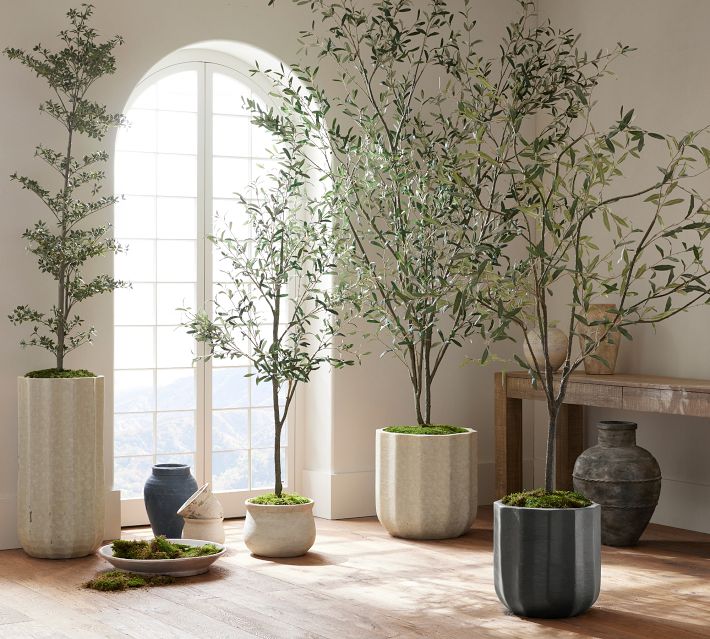Decorative olive trees have captured the hearts of many homeowners and garden enthusiasts alike. With their silvery green leaves and gnarled trunks, these trees add a touch of Mediterranean charm to any space. Whether you’re considering an olive tree for indoor decor or outdoor landscaping, this comprehensive guide will provide you with all you need to know.
Understanding Decorative Olive Trees
What Is a Decorative Olive Tree?
The decorative olive tree, scientifically known as Olea europaea, is a small to medium-sized tree native to the Mediterranean region. Renowned for its adaptability and beauty, it serves as a focal point in gardens, balconies, and even indoor spaces.
Why Choose an Olive Tree for Decoration?
- Aesthetics: Its unique foliage and aesthetics bring beauty to any area.
- Symbolism: Olive trees symbolize peace and prosperity.
- Low Maintenance: They require minimal care compared to other ornamental trees.
- Versatility: Perfect for various styles, from rustic to modern.
Types of Decorative Olive Trees

Popular Varieties
| Variety | Height | Features |
|---|---|---|
| Arbequina | 2-3 meters | Small size, abundant fruit, and attractive foliage. |
| Frantoio | 3-4 meters | Larger leaves, great for oil production. |
| Mission | 3-5 meters | Resilient, produces flavorful olives, and offers beautiful foliage. |
| Manzanilla | 2-3 meters | Compact size, known for producing table olives. |
How to Grow and Care for Decorative Olive Trees

Growing Conditions
To thrive, decorative olive trees need specific growing conditions:
- Sunlight: Full sun exposure (6-8 hours daily).
- Soil: Well-draining soil, slightly alkaline pH.
- Watering: Moderate watering; allow soil to dry between waterings.
- Climate: Prefer warm, dry climates but can tolerate cooler temperatures.
Planting Your Olive Tree
- Choose a pot with drainage holes (if planting indoors).
- Use a potting mix that encourages drainage, such as a cactus mix.
- Place the tree in a sunny spot, ensuring it receives direct sunlight.
- Water thoroughly but avoid overwatering to prevent root rot.

Maintenance Tips
With my personal experience, taking care of olive trees can be a rewarding endeavor! Here are some maintenance tips:
- Pruning: Prune in late winter to maintain shape and encourage growth.
- Pest Control: Keep an eye out for aphids and scale; use organic insecticides if necessary.
- Fertilization: Fertilize with a balanced fertilizer during the growing season.
- Repotting: Repot every 2-3 years to refresh the soil and manage root growth.
Styling Your Space with Olive Trees

Indoor Decoration Ideas
Decorative olive trees make stunning indoor decorations. Here are a few ideas:
- Living Room: Use a tall olive tree in a decorative pot as a focal point near a window.
- Office: A smaller olive bonsai can add a cozy touch to your workspace.
- Entryway: Place a potted olive tree to create an inviting atmosphere.
Outdoor Landscaping Tips
Incorporating olive trees outdoors can transform your garden space:
- Border Planting: Use olive trees to create natural borders or hedges.
- Container Displays: Group various heights of olive trees in decorative pots for visual interest.
- Pathways: Line pathways with olive trees for a charming Mediterranean vibe.

Comparative Analysis: Indoor vs. Outdoor Olive Trees
| Factor | Indoor Olive Trees | Outdoor Olive Trees |
|---|---|---|
| Space | Limited; suitable for smaller areas. | Ample space; grown in gardens or yards. |
| Light Requirements | Requires bright, indirect light. | Needs full sun for optimal growth. |
| Maintenance | Constant moisture management. | More tolerant to drought conditions. |
| Size Potential | Usually smaller, often in pots. | Can grow taller and wider, providing shade. |
Benefits of Having Decorative Olive Trees

Environmental Contributions
- Air Purification: Olive trees help improve indoor air quality.
- Biodiversity: Attracts various beneficial insects and birds.
Health Benefits
Beyond decoration, olive trees also have health benefits:
- Stress Reduction: The presence of plants can reduce stress and improve mental well-being.
- Increased Humidity: Olive trees help maintain humidity levels, benefiting respiratory health.

Challenges and Solutions
Common Issues with Olive Trees
While decorative olive trees are generally hardy, they can face some challenges:
- Overwatering: Can lead to root rot. Ensure pots have proper drainage.
- Pest Infestations: Regular checks can prevent serious damage.
- Leaf Drop: Often a sign of stress; review care routines.
Tips to Overcome Challenges
- Monitor soil moisture levels regularly.
- Use insecticidal soap for pest control.
- Adjust lighting conditions to prevent leaf drop.
Frequently Asked Questions (FAQs)
1. Can decorative olive trees survive indoors?
Yes, decorative olive trees can thrive indoors if placed in a bright area with direct sunlight and given proper care.
2. How often should I water my olive tree?
Water your olive tree when the top inch of soil feels dry. It’s important to avoid overwatering.
3. Do olive trees need pruning?
Yes, pruning is recommended to maintain the shape and health of your olive tree, ideally done in late winter.
4. What pests affect olive trees?
Aphids, scale, and spider mites are common pests that may affect olive trees. Regular monitoring can help in early detection.
5. How much light do olive trees need?
Olive trees require full sun, about 6-8 hours of direct sunlight every day, to grow optimally.
6. Are olive trees good for small spaces?
Yes, smaller varieties like Arbequina or Manzanilla are great for small spaces and can thrive in pots.
7. Can I grow an olive tree from a cutting?
Yes, you can propagate olive trees from cuttings, but it requires patience and the right conditions for rooting.
Conclusion
Decorative olive trees are not just stunning vessels of beauty; they are also symbols of peace and resilience. Whether you’re looking to enhance your indoor space or create a Mediterranean garden oasis, incorporating olive trees can be a rewarding experience. With proper care and creative styling, your olive tree can thrive and bring joy for years to come!